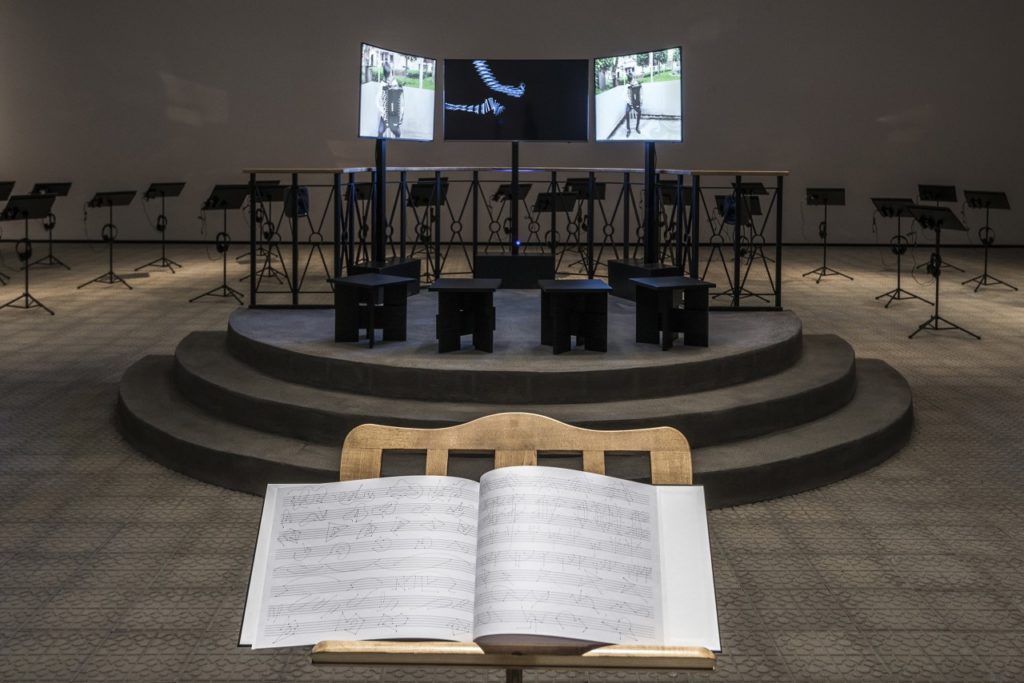This weekend, the Peabody Essex Museum (PEM) opens a new installation in its Jeffrey P. Beale Gallery, a space dedicated to immersive art experiences. Multidisciplinary artist Carlos Garaicoa, one of the most widely exhibited Cuban artists, has imagined a new kind of orchestra made up of 40 musicians he discovered performing in the streets of Madrid and Bilbao.
Making its North American premiere at PEM, Partitura weaves together artists from disparate cultural backgrounds and musical traditions—from West African drummers to accordion players and European opera singers. Carlos Garaicoa: Partitura is on view at PEM from March 8 through January 3, 2021.
“The experience of cities is of particular importance to Carlos Garaicoa,” says Trevor Smith, PEM’s Curator of the Present Tense, who has known the artist for twenty years. “The emotional core of his work lies in the tension between the aspirational cosmopolitan ideals which have long attracted people to urban centers, and the often gritty realities they find there.”
“Street musicians are one way that the city is enlivened through creative expression,” says Smith. “Although the musicians who participated in Partitura were filmed in Madrid and Bilbao, their experience has universal resonance and invites us to consider how we choose to interact with our own built environments.”
Forty music stands are arranged in semi-circles like a virtual orchestra. On each stand an abstract drawing on score paper is paired with a street musician’s performance played back through a video tablet and headphones. Throughout the gallery a composition by Esteban Puebla is heard that is assembled from these individual performances. This technique of remixing pre-recorded sources nods to contemporary DJ culture but it has its origins in musique concrète (concrete music) of the 1940s. Puebla used audio recordings and other electronic effects that go beyond traditional forms of orchestration. A video triptych featuring an abstract animation of the music reveals how the composition weaves individual performances together. The result is a collective portrait of creative expression that is surprising, joyful and revelatory.

“The idea of pulling together all of these different musical traditions and degrees of talent into a single composition is a very utopian gesture,” says Smith. “It asks us to consider how inspiring beauty can be created from great diversity.”
Carlos Garaicoa was born in 1967 in Havana, Cuba. The artist studied thermodynamics before his mandatory military service, during which he worked as a draughtsman. Garaicoa then attended the Instituto Superior de Arte in Havana from 1989 to 1994. Since the early 1990s, Garaicoa has employed photography, performance, drawing, sculpture, installation, text, and video to comment on architecture’s reflection of and effect on the political, economic, and cultural reality of cities.

